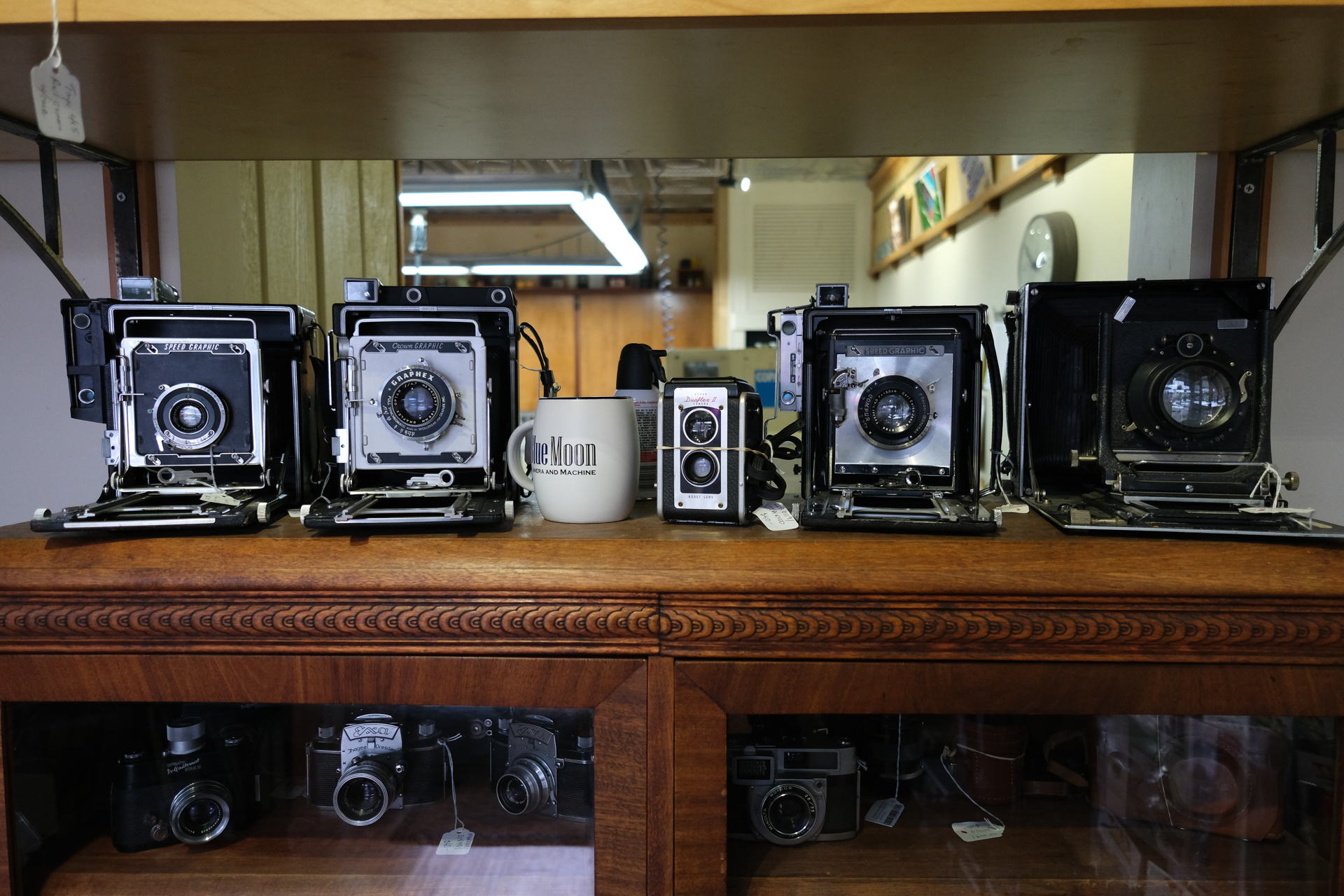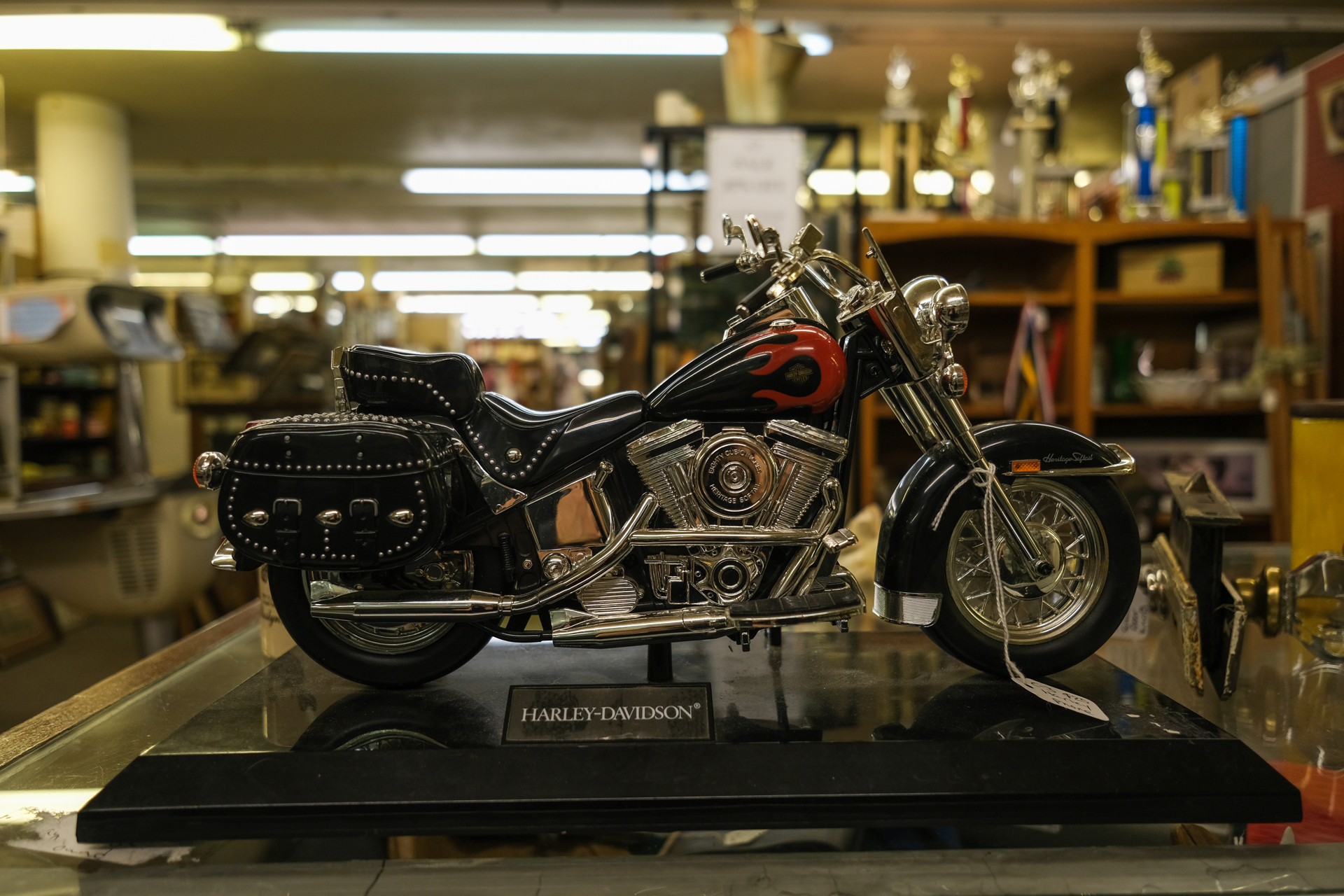- Fast autofocus with face/eye detection
- Same sensor, processor as X-T3
- 10-bit 4K video output
- Engaging user experience
- Fast continuous shooting speed
- No in-body image stabilization
- Some ergonomic compromises
- Small image buffer
Steve Jobs once famously said, “If you don’t cannibalize yourself, someone else will.” It was in reference to how the iPhone would take sales away from the iPod — a move that proved tremendously successful for Apple. The topic of cannibalization comes up often in the camera world. Some companies, like Canon, avoid it like the plague. Fujifilm, however, appears to embrace it, and nowhere is that more evident than in the new X-T30.
The X-T30 arrives just 6 months after the flagship Fujifilm X-T3, bringing with it many of that camera’s advanced specifications and features — for hundreds of dollars less. At $900 for the body only, or $1,000 with a basic kit lens, the X-T30 may leave some X-T3 customers wondering what they paid $1,500 for. It has the same sensor, same processor, same autofocus system, and similar video capabilities, all wrapped into a smaller, lighter body.
There are differences, mainly in the build quality and control layouts — things that Fujifilm fans tend to appreciate. The X-T30 also has small tweaks that feel like lateral moves more than improvements. Still, there’s little that separates the X-T30 technically from the X-T3. As a primary camera for beginners and enthusiasts, or a secondary camera for professionals, the X-T30 is an outstanding value.
Design and handling
The Fujifilm X series has always put modern digital technology into an analog-inspired shell. Physical shutter speed, exposure compensation, and aperture (on the lens) dials are used in place of multifunction command dials, modifier keys, and on-screen displays. T here is little, if anything, objectively better about this approach, but the classic look, along with the satisfying tactile feedback, is what makes Fujifilm cameras stand out from the crowd and is a major reason behind the brand’s vehement fan following. Yes, it’s a high-tech product, but the tech is there merely to complement the engaging shooting experience.
It’s what separates the X-T30 from its closest competitor, the Sony A6400. A casual glance at each camera is all it takes to recognize their spiritual differences. The Sony is a modern piece of high-tech gadgetry, while the Fuji is an artist’s tool. Both are, with minor exceptions, equally capable. The X-T30 doesn’t have the A6400’s 180-degree flip screen, instead opting for an LCD that can tilt only up or down, but we prefer its center-mounted viewfinder. Neither camera has in-body image stabilization, which, for the Fujifilm, comes as no surprise as not even the X-T3 has it.
No matter how advanced the X-T30 has become, no matter how many features Fujifilm has managed to cram into its 13.5-ounce body, the reason for buying it remains the same. If it doesn’t nail that classic look and feel and capture the essence of the X series, then it fails.
The four-way button cluster on the back has been replaced with an autofocus point selector joystick.
Fortunately, the X-T30 succeeds. The top plate is decorated with the type of single-function, direct-access controls we’ve come to expect from the series. Customers who want to throw that all away can toggle the Auto switch, which forces the camera into a fully automatic exposure mode regardless of where the various dials are set. This is one feature that makes the X-T30 approachable to beginners.
Compared to the X-T3, the X-T30 is smaller and not weather-sealed. It makes do with a single SD card slot but does use the same battery as the X-T3 (and the X-T2 and X-T20 before it). It lacks an ISO dial and has fewer buttons overall.
Compared to the X-T20, there is one major change to the control layout. The four-way button cluster on the back has been replaced with an autofocus point selector joystick.
Normally, the AF joystick is one of our favorite features on modern cameras. It’s a small thing, but it improves operation dramatically. However, by removing the four-way button cluster, Fujifilm has left useful real estate on the back of the camera empty. To try to visually fill this void, the joystick has been placed lower than normal, which makes it harder to reach. It’s almost impossible to use the joystick and maintain a secure grip on the camera when shooting with one hand.
This is not always worse than the X-T20 — but nor is it obviously better. While we do prefer using the joystick to select an AF point, it’s not quite as intuitive for navigating the menus as the four-way buttons were. In short, it’s a trade-off, and a needless one at that. There was plenty of room to simply add the AF joystick without removing any other controls.
Features and specifications
Fujifilm’s decision to separate its midrange and upper-tier cameras on physical design rather than technical capability is an interesting one, but one that should make X-T30 owners happy. If you don’t need dual card slots or weather sealing and you can get by with a less robust control layout, you will sacrifice little by choosing the X-T30 over the X-T3.
You get the same backside-illuminated, 26-megapixel X-Trans sensor, the same X Processor 4, and the same 425-point phase-detection autofocus system that effectively covers 100-percent of the frame. Face- and eye-detection work in both continuous autofocus and video modes, and performance is great with newer XF lenses. (Older XF lenses were built with more complex focusing elements that make them a bit slower.) We were impressed with the range of eye detection, which makes it useful for all manner of portraits.
While good, X-T30’s autofocus is not as advanced as the impressive Real-Time Tracking in the Sony A6400, which uses artificial intelligence to recognize and track subjects. The Sony will come out ahead if you shoot a lot of sports or action.
The X-T30 is a bit slower than the X-T3 in terms of both shutter speed and continuous shooting rate. Mechanical shutter speed tops out at 1/4,000 second, a stop behind the X-T3, but the electronic shutter still works up to 1/32,000. Burst rate manages a respectable 8 frames per second with the mechanical shutter, down from 11, but you can fire away at 20 fps using the electronic shutter — or 30 with a 1.25x crop.
Unsurprisingly, video quality is also good — and if you’re fortunate enough to have an external recorder, it’s stunning.
Where the X-T30 falls behind is with its smaller image buffer. It can hold just 18 RAW files (a number we confirmed in testing), which means it can sustain an 8-fps burst for just over 2 seconds. In electronic shutter mode at 20 or 30 fps, however, that equates to less than one second of continuous high-speed shooting. In these modes, we recommend shooting JPEG only, as the smaller files will give you longer bursts.
For video, the X-T30 is the most impressive camera in its class — at least if you don’t mind recording externally. 4K is recorded from the full width of the sensor at 24 or 30 fps, and internal recording tops out at 8-bit 4:2:0 and 200 megabits per second, rather than the 10-bit, 400Mbps codec of the X-T3 (which can also shoot 4K at 60 fps). To be clear, however, this is still a big leap over the cropped, 100Mbps

The X-T30 allows for clean, 10-bit 4:2:2 output over HDMI — something we were surprised to see in a camera at this price — and even includes the flat F-Log profile for preserving more dynamic range. That makes it a perfect B camera for X-T3 owners willing to work with an external recorder.
This is all very impressive for a $900 camera, and the HDMI output of the X-T30 is even superior to that of the Sony A6400. It’s a bit shocking to see a Fuji outperforming a Sony in video.
Image quality
There are no surprises here. The 26MP X-Trans sensor performs just as we expected, having already tested it in the X-T3. That means excellent dynamic range at the base ISO of 160, producing some of the best RAW files we’ve ever seen from an APS-C sensor.
Of course, the smaller sensor means it won’t hold up as well in low-light situations at high ISO settings compared to full-frame sensors. Having just reviewed the very good, full-frame Panasonic Lumix S1, it’s hard to ignore the difference in high ISO image quality. Still, the X-T30 is about as good as APS-C gets, and we’d call it usable through ISO 6,400 — maybe even 12,800 if you apply some noise reduction in post. Also, keeping in mind the cost difference between this and full-frame cameras, we have no complaints.
Unsurprisingly, video quality is also good — and if you’re fortunate enough to have an external recorder, it’s stunning. The 10-bit footage grades very well, and F-Log holds plenty of dynamic range. Fujifilm also included the Eterna profile, first introduced on the X-H1, which is a film simulation based on the company’s now-discontinued motion picture film. It looks beautiful and is a great alternative to F-Log if you’d rather not spend so much time in postproduction.
Connectivity
The X-T30 has just four points of physical connectivity: A hot shoe, a USB-C port, a 2.5mm microphone jack, and a Micro HDMI port. That microphone jack will require an adapter to work with standard 3.5mm microphones, and there is no dedicated headphone jack, but you can connect headphones to the USB-C port via an adapter. That’s not ideal, but at least the options are there. The Sony A6400 has no jack at all.
Wireless connectivity is a combination of Bluetooth and Wi-Fi. Bluetooth maintains an always-on connection with your mobile device, which can work as a remote trigger in this mode, but Wi-Fi is still required for transferring photos. Thankfully, connecting to Wi-Fi is automated via the Bluetooth connection, which saves you from having to navigate to your phone or tablet’s Wi-Fi settings and manually connecting to the camera.
Fujifilm also redesigned its mobile app with the launch of the X-T30, and it’s a big improvement. It is both faster and easier to navigate now, and if you own multiple Fujifilm cameras, it lets you seamlessly switch from one to the other. It still isn’t perfect, but we’re pleased to see that camera companies are finally learning a thing or two about app design.
Our Take
Despite the changes to the control layout, we remain wholly impressed with the X-T30. This is an astonishingly capable camera for under $1,000 that only gets better when you pair it with a nice lens. When pushed to its limits in both still photography and video, the X-T30 exactly matches the quality of the $1,500 X-T3. Yes, best-quality video requires an external recorder — but the fact a camera in this class can shoot at this level of quality is noteworthy.
More importantly, when the excitement over the tech fades away, the X-T30 offers a shooting experience that distills the practice of photography into its most important and engaging aspects. And that is perhaps Fujifilm’s greatest strength. For all the features and power, nothing ever gets in your way, and nothing distracts you from the essence of the art. A camera that pours this much tech into a design that allows you to completely forget about it is quite an accomplishment.
Is there a better alternative?
No, although this likely comes down to personal preference. The Sony A6400 is certainly a solid camera and is the better choice for sports and action photography, but the X-T30 bests it everywhere else. Whether or not you prefer the retro styling and controls is up to you.
How long will it last?
Fujifilm updates this line like clockwork every two years, so expect a replacement around March 2021. The X-T30 is well made, but it is not weather-sealed like the X-T3, so be sure to treat it accordingly. You should get years of use out of it if you do.
Should you buy it?
Absolutely. This is one of the best bargains in cameras right now. It can meet the needs of a wide gamut of photographers, from beginner to professional, photographers to videographers. This is both an excellent choice as a first interchangeable lens camera, and a perfect option as a backup or B camera for current X-T3 owners.





























